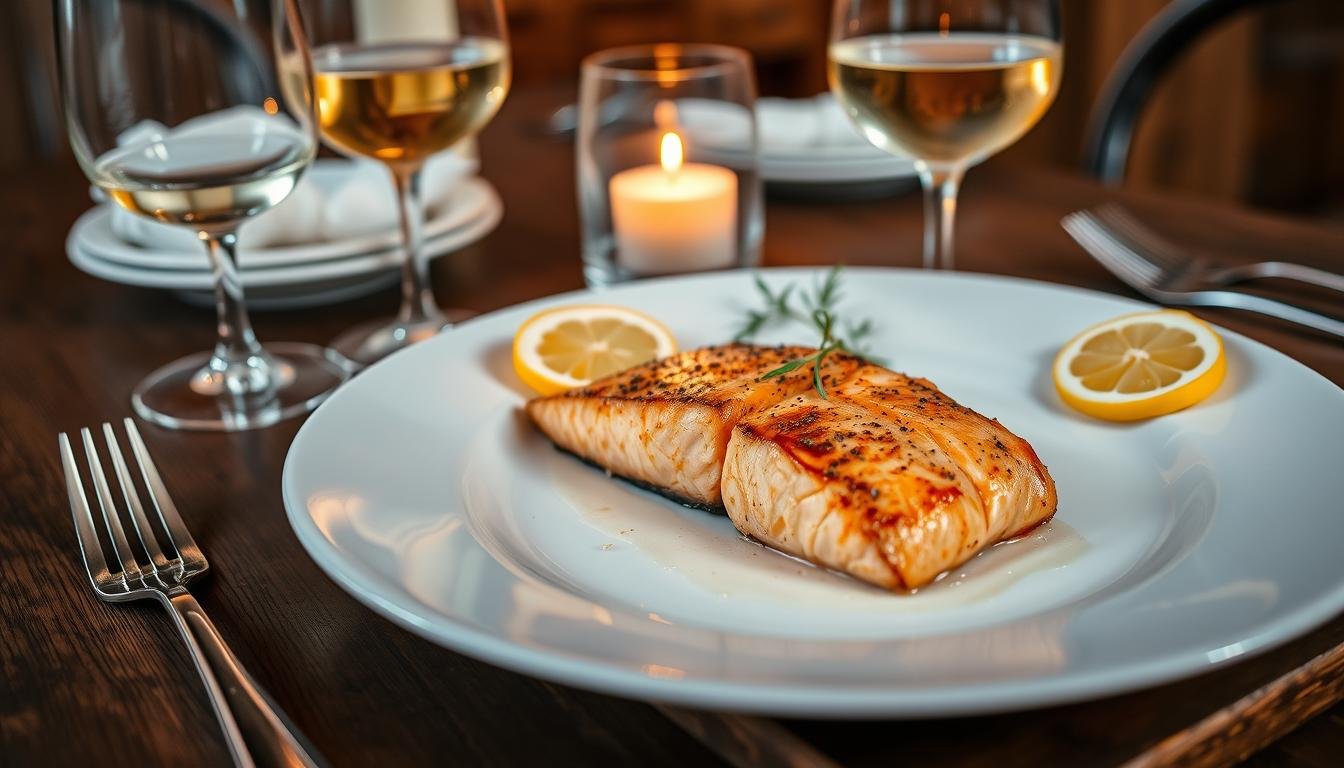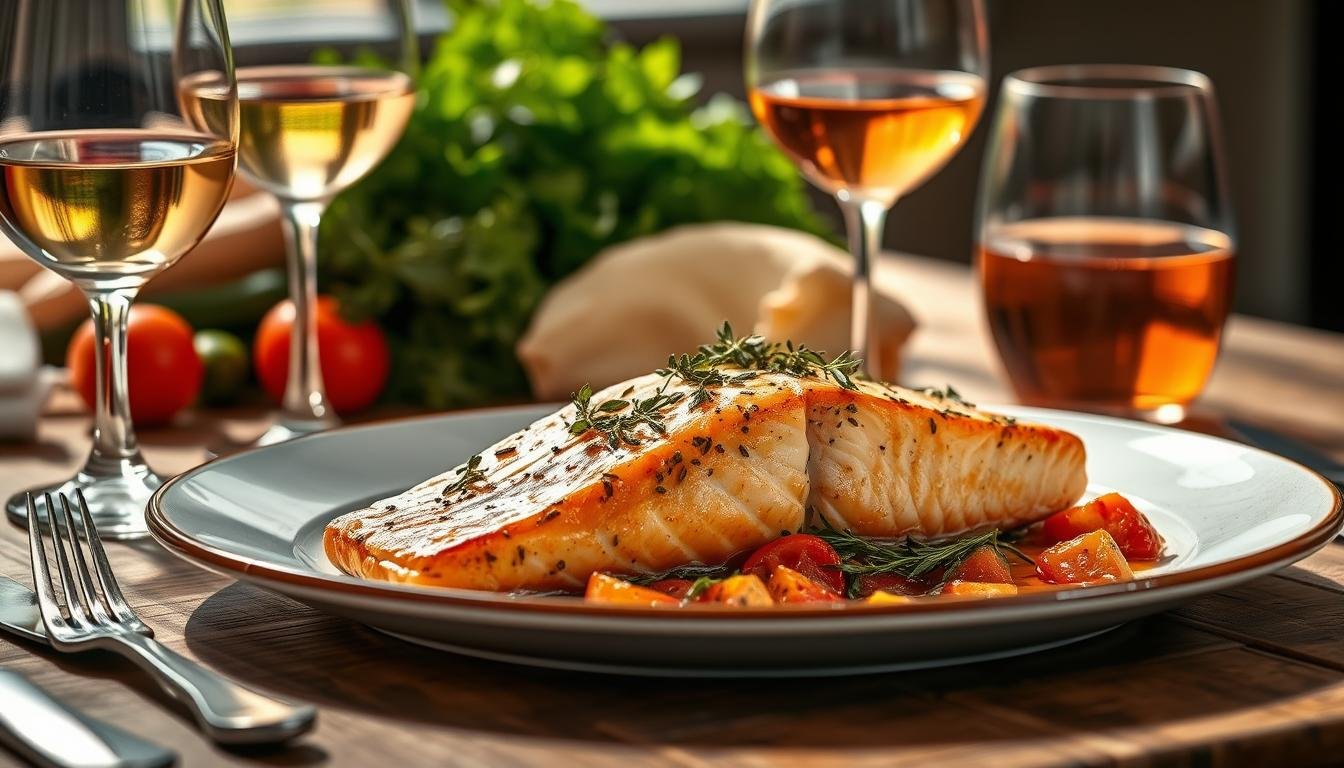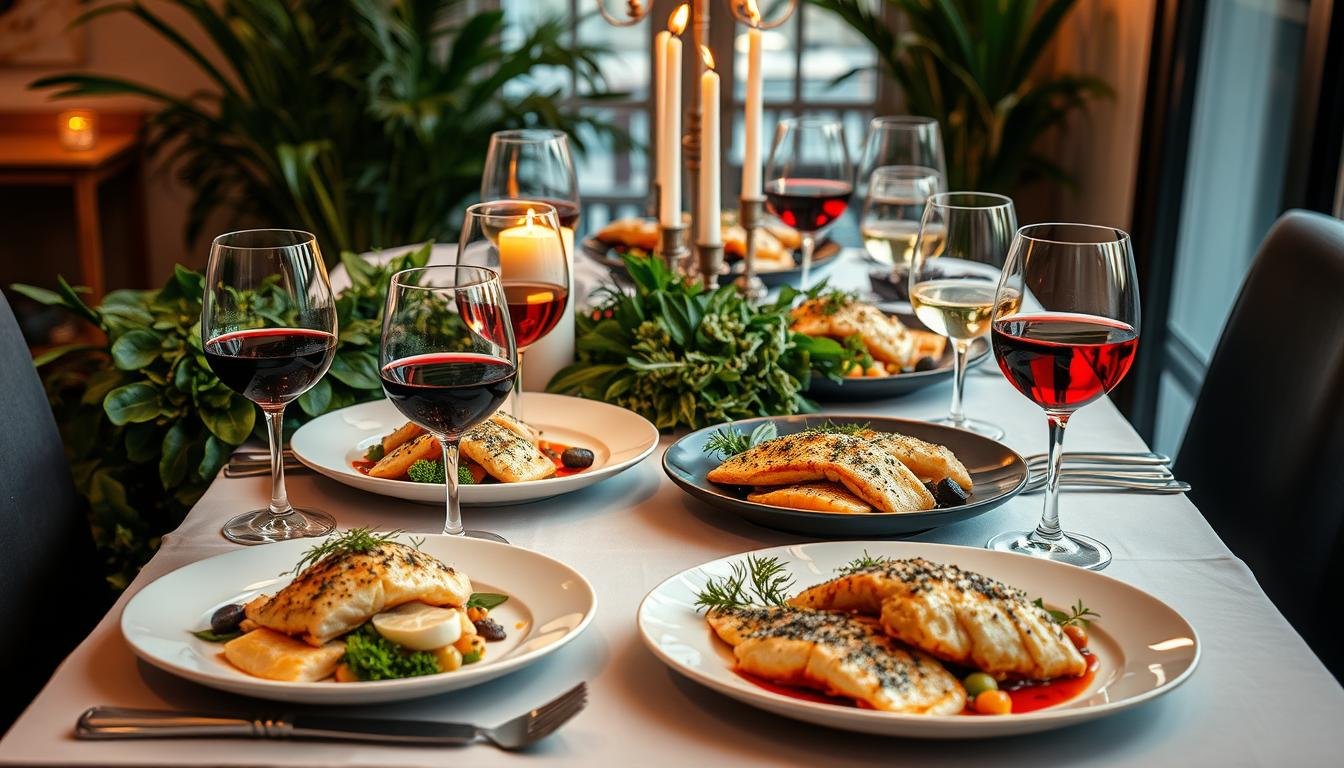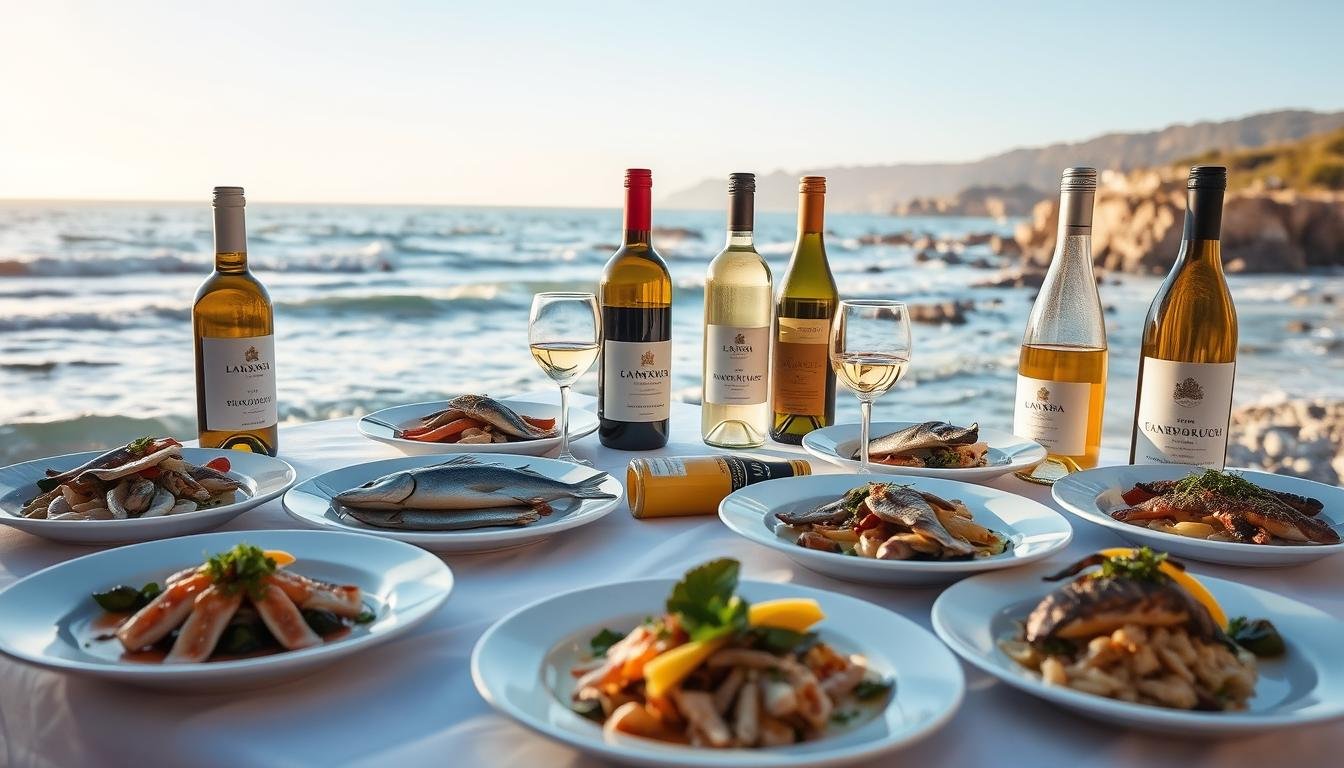As you explore the world of wine, you may have heard of the Dão wine region in Portugal, known for its unique terroir and high-quality wine production. This region is home to many notable wineries, including top Dão wineries such as Caminhos Cruzados and Boas Quintas, which are among the best Dão wine producers. With its rich history dating back to the 8th century, the Dão wine region offers a captivating experience for wine enthusiasts.
The Dão wine region features vineyards situated 400-700 meters above sea level, providing an optimal climate for grape growing. You can visit wineries like Caminhos Cruzados, which operates on a 42-hectare property with vineyards averaging over 50 years in age, and Boas Quintas, which cultivates 12 hectares of vines. These top Dão wineries are among the best Dão wine producers, offering a range of wine collections.
Key Takeaways
- The Dão wine region is known for its unique terroir and high-quality wine production.
- Top Dão wineries such as Caminhos Cruzados and Boas Quintas are among the best Dão wine producers.
- The region features vineyards situated 400-700 meters above sea level, providing an optimal climate for grape growing.
- Visitors can explore wineries and experience the local gastronomy, including dishes such as slow-cooked veal and traditional Portuguese sausage.
- The Dão wine region has a rich history dating back to the 8th century, making it a captivating destination for wine enthusiasts.
- Best Dão wine producers offer a range of wine collections, including Caminhos Cruzados, Teixuga, Clandestino, and Titular.
Introduction to the Dão Wine Region
The Dão wine region, located in central Portugal, is renowned for producing highest quality dão wines. This region’s unique terroir and climate contribute to its dão region wine excellence. With a mild climate and ample sun and rain, the Dão region is optimal for wine production.
As you explore the Dão wine region, you’ll discover its rich history and cultural heritage. The region’s wine production is characterized by its focus on non-fortified red and white table wines, reflecting the diversity of Portuguese winemaking.
Geographic Location and Climate
The Dão region covers an area of approximately 20,000 hectares, with vineyards located at elevations of 400 to 700 meters above sea level. This high-altitude climate influences the wine’s acidity and flavor profile, resulting in highest quality dão wines.
Historical Significance of Dão Wines
The Dão region has been producing wine for centuries, with a focus on traditional methods and grape varieties like Touriga Nacional and Alfrocheiro. The region’s dão region wine excellence is reflected in its growing global recognition, with over 30 wines achieving scores higher than 90 points in various wine competitions.
Grape Varieties Unique to Dão
The Dão wine region is known for its unique grape varieties, which are used by many premier dão wine estates to produce high-quality wines. Two of the most notable grape varieties in the region are Encruzado and Touriga Nacional. These varieties are highly prized for their quality and are used by many exceptional dão wine makers to create complex and harmonious wines.
Some of the key characteristics of these grape varieties include:
- Encruzado: a white grape variety known for its crisp acidity and flavors of citrus and stone fruit
- Touriga Nacional: a red grape variety known for its vibrant acidity and flavors of dark fruit and spices
These grape varieties are used to produce a range of wines, from single-varietal expressions to traditional blends. The use of these unique grape varieties is one of the factors that sets the Dão wine region apart from other wine-producing regions.
The combination of these unique grape varieties and the region’s terroir makes the Dão wine region a must-visit destination for wine enthusiasts. With its rich history, stunning landscapes, and exceptional wines, the Dão region is an ideal place to explore and discover new wines.
| Grape Variety | Characteristics |
|---|---|
| Encruzado | Crisp acidity, flavors of citrus and stone fruit |
| Touriga Nacional | Vibrant acidity, flavors of dark fruit and spices |
Dão’s Winemaking Traditions
As you explore the renowned dão vineyards, you’ll discover the rich winemaking traditions that have been perfected over centuries. The region’s unique terroir plays a significant role in shaping the character of its wines, with factors such as soil, climate, and elevation all contributing to the distinct flavor profiles of top-rated dão wine labels.
The traditional winemaking methods used in the Dão region are characterized by a focus on quality and attention to detail. Winemakers carefully select and harvest grapes from the best vineyards, often located at high elevations, to produce wines that are known for their freshness, elegance, and minerality. Some notable characteristics of Dão wines include:
- Freshness and acidity, thanks to the region’s cool climate and significant diurnal temperature shifts
- Elegance and finesse, resulting from the careful handling of grape varieties such as Encruzado and Touriga Nacional
- Minerality, which is imparted by the region’s granite soils and contributes to the wines’ aging potential
With its long history of winemaking and commitment to quality, the Dão region is home to many top-rated dão wine labels, offering a range of styles and flavors to suit every palate. Whether you’re a seasoned wine enthusiast or just discovering the charms of Portuguese wine, a visit to the renowned dão vineyards is sure to be a memorable experience.

| Wine Style | Characteristics |
|---|---|
| White | Fresh, elegant, mineral |
| Red | Full-bodied, structured, fruity |
Visiting Dão Wine Estates
As you explore the dão wine region portugal, you’ll discover a world of exclusive wine selections. The region is home to many exceptional wineries, each offering a unique perspective on wine production. When visiting the Dão wine estates, you can expect to find a range of wine tasting experiences, from traditional to modern and innovative approaches.
Some recommended wineries for tourists include those that offer exclusive dão wine selections. These wineries provide a chance to taste some of the region’s best wines, learn about the winemaking process, and enjoy the beautiful scenery. You can also expect to find a range of wine-related activities, such as vineyard tours and wine pairings with local cuisine.
To make the most of your visit, consider planning your trip in advance and booking wine tastings and tours at the wineries you’re interested in. This will ensure that you have a smooth and enjoyable experience, and that you get to taste some of the region’s exclusive dão wine selections. With its rich history, stunning landscapes, and of course, excellent wines, the Dão wine region is a must-visit destination for any wine enthusiast.
Pairing Dão Wines with Food
As you explore the Dão wine region travel, you’ll discover that the region’s cuisine is known for its simplicity and freshness, making it an ideal match for the region’s wines. When it comes to pairing Dão wines with food, the options are endless. For a truly immersive experience, consider visiting the Dão wine region and indulging in the local cuisine, a perfect example of dão wine tourism.
The key to pairing Dão wines with food is to balance the flavors and textures. For Dão whites, try pairing them with lighter dishes such as grilled fish or salads. For Dão reds, opt for heartier dishes like braised meats or rich cheeses. Some specific pairing suggestions include:
- Grilled meats, such as steak or lamb
- Game meats, like wild boar or venison
- Strong cheeses, like cheddar or gouda
- Rich sauces, like mushroom or peppercorn
When visiting the Dão wine region, be sure to try some of the local specialties, such as Cabrito Assado (Roasted Goat) or Bacalao com Natas (Bacalao with Potatoes). These dishes are perfectly paired with a glass of Dão wine, making for a truly unforgettable dão wine region travel experience.
Remember, the art of pairing wine with food is all about experimentation and finding the perfect balance of flavors. So don’t be afraid to try new things and discover your own favorite pairings. With its rich flavors and aromas, Dão wine is the perfect companion for any meal, making it a must-try for anyone interested in dão wine tourism.
Dão Wine Production
The Dão wine region is known for its exceptional dão wine production, with many winemakers using traditional methods combined with modern technology. The region’s unique dão wine region terroir contributes to the distinct flavor profiles of the wines produced here.
The winemaking process in the Dão region involves careful attention to detail, from grape harvesting to bottling. The region’s winemakers are known for their expertise and dedication to producing high-quality wines. Some notable wineries in the region include Quinta Dos Roques, Julia Kemper Wines, and Textura Wines.
Here are some key facts about the Dão wine region:
- Average annual wine production at Quinta Dos Roques: 150,000 liters
- Average price range of wines from Dão wineries: €6.00 to €117.50
- Predominant soils in the region: granite, comprising 97.8% of the total soil composition

The Dão wine region is experiencing a growing recognition for its potential to produce elegant and mineral-rich red and white wines, notably over the last three decades. With its unique terroir and expert winemakers, the region is sure to continue producing high-quality wines that showcase the best of dão wine production.
| Wineries | Price Range |
|---|---|
| Quinta Dos Roques | €10.00 – €50.00 |
| Julia Kemper Wines | €15.00 – €30.00 |
| Textura Wines | €18.00 – €25.00 |
Dão Wine and Food Pairing
When it comes to dão wine and food pairing, the region’s cuisine offers a wide range of options. The dão wine region cuisine is known for its simplicity and freshness, making it an ideal match for the region’s wines.
Some popular dishes in the dão wine region include caldo verde, a hearty soup made with potatoes, kale, and sausage, and feijoada, a rich stew made with beans and pork. These dishes pair perfectly with the region’s red wines, such as Touriga Nacional and Tinta Roriz.
For a unique dão wine and food pairing experience, consider the following options:
- Pair a glass of Encruzado with a plate of fresh seafood, such as grilled fish or shrimp.
- Match a glass of Touriga Nacional with a traditional Portuguese dish, such as bacalhau à brás or feijoada.
- Enjoy a glass of Tinta Roriz with a selection of cured meats and cheeses, such as queijo da serra and presunto.
| Dão Wine | Food Pairing |
|---|---|
| Encruzado | Fresh seafood, such as grilled fish or shrimp |
| Touriga Nacional | Traditional Portuguese dishes, such as bacalhau à brás or feijoada |
| Tinta Roriz | Cured meats and cheeses, such as queijo da serra and presunto |
Dão Wine Region History and Culture
The Dão wine region has a rich history, with evidence of winemaking dating back to the ancient Lusitanians around 1000 BCE. The region’s unique culture is deeply rooted in its wine production, with the dão wine region history playing a significant role in shaping the local traditions and way of life.
As you explore the dão wine region culture, you will discover the importance of wine in the region’s identity. The region is characterized by granite soils and high-altitude vineyards, which contribute to the distinct flavor profiles of the wines. The dão wine region history is marked by the influence of various civilizations, including the Phoenicians, Romans, and Moors, who introduced new grape varieties and winemaking techniques.
Some of the key factors that contribute to the dão wine region culture include:
- Indigenous grape varieties, such as Touriga Nacional and Encruzado
- Traditional winemaking methods, such as foot treading and oak aging
- The region’s unique terroir, with granite soils and high-altitude vineyards
The dão wine region history and culture are deeply intertwined, with wine playing a central role in the region’s traditions and customs. As you experience the dão wine region culture, you will gain a deeper understanding of the region’s rich history and the significance of wine in the local community.
| Wine Region | History | Culture |
|---|---|---|
| Dão | Ancient Lusitanians, Phoenicians, Romans, and Moors | Indigenous grape varieties, traditional winemaking methods, unique terroir |
Conclusion: Why You Should Explore Dão
As you consider your next wine destination, the Dão wine region in Portugal stands out as a hidden gem. With its unique culture, rich history, and exceptional wine production, visiting the Dão wine region is an experience you won’t want to miss. The region offers a range of activities, from wine tastings to traditional cuisine, making Dão wine region tourism a must-try for any wine enthusiast.
With 28 curated experiences in the Dão region, you can immerse yourself in the local way of life and discover the secrets of Dão wine production. From learning about the winemaking process to exploring the region’s stunning landscapes, there’s something for everyone in the Dão wine region. So why not start planning your trip today and experience the delights of the Dão wine region for yourself?
Discover the Authentic Charm of Dão
Whether you’re interested in wine, food, or culture, the Dão wine region has something to offer. With its warm hospitality and authentic charm, you’ll feel right at home as you explore the region’s vineyards, wineries, and traditional villages. So come and experience the magic of the Dão wine region, and discover why it’s a must-visit destination for anyone who loves wine and travel.
Plan Your Visit to Dão
With its rich history, stunning landscapes, and exceptional wine production, the Dão wine region is the perfect destination for your next wine adventure. Whether you’re looking for a relaxing getaway or an action-packed trip, visiting the Dão wine region is an experience you’ll never forget. So start planning your trip today and get ready to discover the delights of the Dão wine region.









